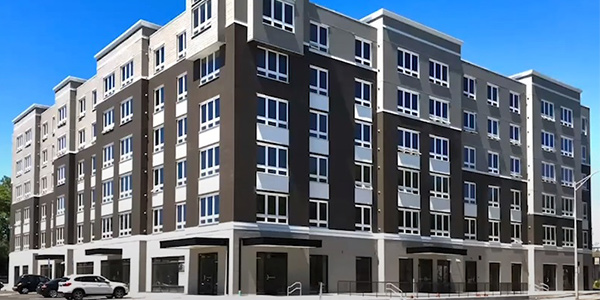Affordable housing developments built to passive-house standards are increasingly seen as a valuable tool, not just for addressing climate change, but also the high energy burden that low-income families in the U.S. face.
Passive-house goals go beyond energy efficiency to include durability, energy cost reduction, indoor temperature, high-quality indoor air, carbon emissions reduction and resilience, Lois Arena, director of passive house services for Steven Winter Associates, said Friday at the Northeast Summit for a Sustainable Built Environment (NESSBE).
To qualify as a passive house — those built to consume as little energy as possible — a building must meet rigorous standards for space heating and cooling, energy demand, airtightness and comfort.
Those factors, Arena added, make the passive-house standard critical for addressing energy costs on low-income families. The energy burden (i.e., portion of total household income that goes to energy bills) for low-income housing is about three times higher than non-low-income housing, she said. And low-income houses have higher utility bills per square foot because the housing stock is older and far less efficient.
Without a paradigm shift in the U.S., the energy burden for low-income families is going to worsen. From 2004 to 2014, according to Arena, average U.S. residential electricity prices increased by 39%, while the average income grew 0.9%.
“If utility rates keep outpacing increases in income, our low-income housing populations are just going to get more and more burdened by utility rates than everyone else,” she said.
In an example of utility bill savings for passive house versus conventional construction, according to Arena, a 100-unit, multifamily dwelling saw a reduction of $85,000 in gas and electricity expenses. Savings on gas expenses alone accounted for 77% of that total.
Steven Winter Associates won project funding in 2016 from the Connecticut Housing Finance Authority’s first round of federal low-income housing tax credits (LIHTCs) to incentivize passive house construction. The project, Columbus Commons, was completed in March 2020.
The housing authority last week awarded LIHTCs worth $10 million to six affordable housing developments designed to meet passive-house standards. The developments were part of a group of 10 projects to receive the tax credit. Three of the passive house developments will include solar power generation on site.
Steven Winter Associates’ Cooper Park Commons affordable housing project in Brooklyn was named in mid-March as one of New York’s Buildings of Excellence. When completed, the development will include solar generation and meet passive-house and LEED Gold standards.
The value of passive-house design is currently grounded in energy costs, but Karla Butterfield, sustainability director at Steven Winter Associates, said there also are important health benefits that have yet to be realized in the conversation about cost. Regulated indoor temperatures and fresh, filtered air are key components of passive houses that can reduce health problems, such as asthma, heart disease and arthritis. Those health issues relate directly to missed work, missed school and higher health care expenses.
“We are starting to get some anecdotal studies that tell us that living in healthier buildings is better for us overall, but it would be great if we could quantify that savings more,” Butterfield said.


